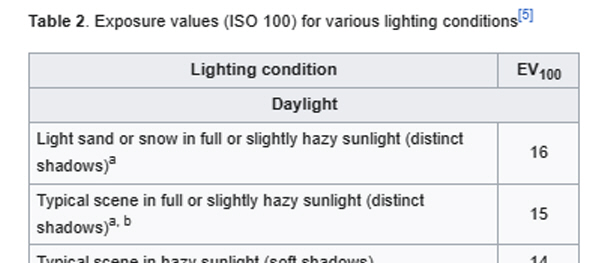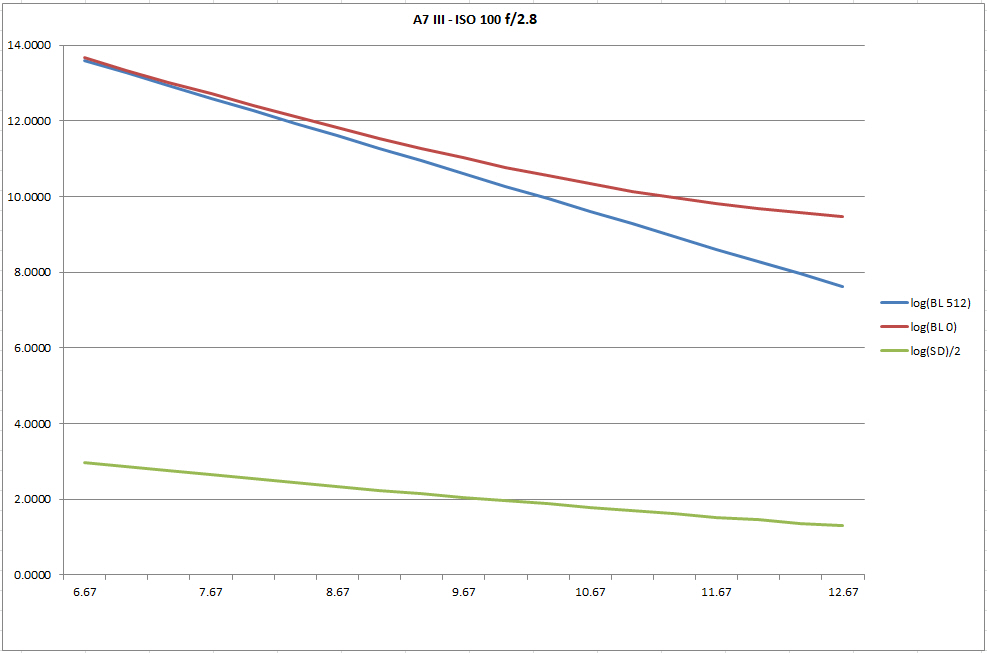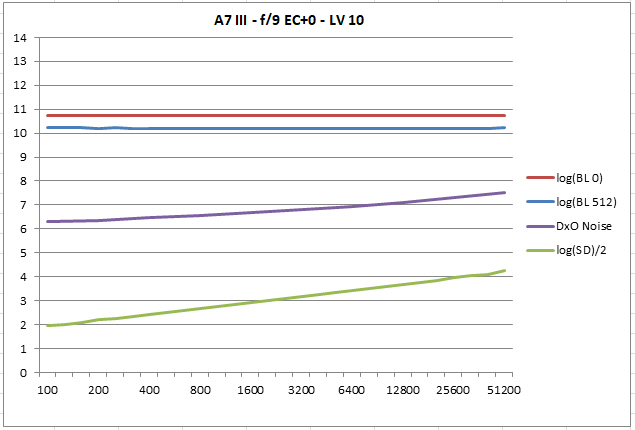Exposure Triangle Spreadsheet Updated
Dec 28, 2023 10:52:17 #
lamiaceae wrote:
Why is it discussions on the UHH can not stay polite? And right after Christmas to top it off. Santa must have given out a lot of lumps of coal this year. So much rude, insulting, opinionated, disrespectful, and downright incorrect and nonsensical talk and language. The trolls are no longer under the bridges. 

There are those that ridicule others so they can feel better about themselves. Products of bad parenting I guess.
Dec 29, 2023 08:46:25 #
EJMcD wrote:
There are those that ridicule others so they can feel better about themselves. Products of bad parenting I guess.
Sadly, that is probably exactly true.

Dec 29, 2023 08:50:07 #
selmslie wrote:
Most of the puffing is about the name Brian Peters... (show quote)
My bad. I thought that Peterson coined the term but now it seems that he didn't. Someone else did and made the term so popular.
Dec 29, 2023 11:00:37 #
BebuLamar wrote:
My bad. I thought that Peterson coined the term but now it seems that he didn't. Someone else did and made the term so popular.
It's so universally accepted that I can't track its origins on the internet.
If you search for Light value or Exposure value, neither one of them mentions a triangle. The only connection is in the heading of one of the tables where EV mentions ISO. However, in the first link you will find the connection, 'LV', in this sense. The Honeywell/Pentax 1°/21° spot meter indicated in "light level" ("LL"), with LL essentially exposure value (EV) for ISO 100 film speed.
But some people just like to look for stuff to argue about.

Dec 29, 2023 12:23:39 #
imagextrordinair
Loc: Halden, Norway
selmslie wrote:
It's so universally accepted that I can't track it... (show quote)
You mention a base ISO of 100...
ISO is simply the starting point or minimum sensitivity for the amount of light available, that's why you have a light meter.
ISO is a limiting factor, not a balancing condition in a triangle you chose at random. You don't choose less or more of the required ISO, it is not a variable, it is a base setting.
F stop and Aperture are you only variables. Your light meter establishes a minimum base ISO based on brightness, so you can reduce ISO noise by adjusting those two variables. You will find the basement at some point and that is where the triangle stops working...
Dec 29, 2023 13:46:09 #
imagextrordinair wrote:
You mention a base ISO of 100... br br ISO is sim... (show quote)
I don’t think you understand what base ISO means. It’s the lowest ISO you can use in the camera’s analog range. Some cameras have an extended lower range but it applies to the JPEG, not the raw file.
The limitation is in your camera.
It’s also in your lens. You can’t open the aperture wider than the maximum or close it down past the minimum. You can add ND filters but you can’t go the other way without removing the CFA.
You shutter has a fastest speed and, unless you have a Bulb setting, a slowest speed.
The light meter does not have a clue about base ISO.
The triangle never stops working.
Dec 30, 2023 02:52:52 #
imagextrordinair
Loc: Halden, Norway
selmslie wrote:
I don’t think you understand what base ISO means. ... (show quote)
You don't get my point...
Yes your light meter does show you the limits of ISO for you to set your adjustments in f stop and aperture, so as if nothing has changed in your setting intentions. ISO has only one function determined at the start, it is not part of any triangle or changes latitude for the outcome other than a negative response to noise.
Also digital noise is limited to one single pixel and is described as ISO, but should be called "sensitivity". Grain in film is not constrained to any borders, so its apples and oranges when it comes to a triangle used back in film days gone by...
Dec 30, 2023 05:43:22 #
imagextrordinair wrote:
You don't get my point...
Yes your light meter does show you the limits of ISO for you to set your adjustments in f stop and aperture, so as if nothing has changed in your setting intentions. ISO has only one function determined at the start, it is not part of any triangle or changes latitude for the outcome other than a negative response to noise.
Yes your light meter does show you the limits of ISO for you to set your adjustments in f stop and aperture, so as if nothing has changed in your setting intentions. ISO has only one function determined at the start, it is not part of any triangle or changes latitude for the outcome other than a negative response to noise.
Your camera's ISO dial, not the meter, shows the ISO values you can select, just like the aperture and shutter speed dials.
An external meter can be set to wider ranges than your camera. It doesn't have a clue about any camera's base ISO.
If you aim your camera or a hand-held meter at a fixed target, changing the ISO will change the recommended exposure. It's doing the exposure triangle calculation for you based on the light value (LV) that it measures.
The specs for a hand-held light meter are typically something like, "Range: 0 to 19.9 EV at ISO 100". Since LV=EV at ISO 100, that's the LV range. If you change the meter's ISO it will change the recommended EV and that means you will need to change the aperture or shutter speed or both.
imagextrordinair wrote:
Also digital noise is limited to one single pixel and is described as ISO, but should be called "sensitivity". Grain in film is not constrained to any borders, so its apples and oranges when it comes to a triangle used back in film days gone by...
None of that is correct.
Dec 30, 2023 14:42:15 #
imagextrordinair
Loc: Halden, Norway
selmslie wrote:
None of that is correct.
... not true, when your light meter shows you are under exposed for a predetermined pair of settings, then you choose a proxy, or new minimum "Base ISO". Your modified minimum ISO will be amplified, and not be the native ISO for adequate light conditions. Usually 100 or sometimes 200...
You lens adjustment is your aperture adjustment.
Dec 30, 2023 16:28:08 #
imagextrordinair wrote:
... not true, when your light meter shows you are under exposed for a predetermined pair of settings, then you choose a proxy, or new minimum "Base ISO". Your modified minimum ISO will be amplified, and not be the native ISO for adequate light conditions. Usually 100 or sometimes 200...
You lens adjustment is your aperture adjustment.
You lens adjustment is your aperture adjustment.
There is only one base ISO for each camera. Two of my cameras have a base ISO of 100, one of 200 and one of 64.
The following plots show how the triangle makes this work. The BL 512 line is the actual raw value used to make JPEG images.
I captured a series of constant target images in 1/3 increments of shutter speed or ISO.
At base ISO 100, dropping the exposure increases the light value. 19 images from 1/13s to 1/800s

At LV10 with Aperture priority, as the ISO drops the shutter speed changes from 1/13s to 1/6400s, 28 images from ISO 100 to 51200

Dec 31, 2023 16:02:59 #
imagextrordinair
Loc: Halden, Norway
selmslie wrote:
There is only one base ISO for each camera. Two of my cameras have a base ISO of 100, one of 200 and one of 64.
The following plots show how the triangle makes this work. The BL 512 line is the actual raw value used to make JPEG images.
I captured a series of constant target images in 1/3 increments of shutter speed or ISO.
The following plots show how the triangle makes this work. The BL 512 line is the actual raw value used to make JPEG images.
I captured a series of constant target images in 1/3 increments of shutter speed or ISO.
Alternate or minimum, not what the camera has listed as it Base ISO for best signal to noise ratio. If its 10pm and your meter tells you to increase ISO to 2000, then that is your new "base" setting for that moment with the light available...
When you adjust ISO... you are adjusting the brightness sensitivity of the sensor. The only positive or negative relates to noise.
Dec 31, 2023 16:41:46 #
imagextrordinair wrote:
Alternate or minimum, not what the camera has listed as it Base ISO for best signal to noise ratio. If its 10pm and your meter tells you to increase ISO to 2000, then that is your new "base" setting for that moment with the light available...
When you adjust ISO... you are adjusting the brightness sensitivity of the sensor. The only positive or negative relates to noise.
When you adjust ISO... you are adjusting the brightness sensitivity of the sensor. The only positive or negative relates to noise.
"When you adjust ISO... you are adjusting the brightness sensitivity of the sensor."
Where did you get that bit of misinformation? Your credibility has gone out the window...
Dec 31, 2023 16:58:34 #
imagextrordinair wrote:
When you adjust ISO... you are adjusting the brightness sensitivity of the sensor. The only positive or negative relates to noise.
Absolutely wrong.

When you reduce the exposure you use less of the sensor's capacity. When you increase the ISO you amplify what the sensor received.
For example, suppose an image (#1) is properly exposed and uses 100% of the sensor's capacity at ISO 100 and 1/100s.
If you now expose it at 1/2000s (#2) you will use only 5% of the sensor's capacity. But at that exposure, if you change the ISO to 2000 (#3) it will still use only 5% of the sensor's capacity but the amplification by 20x will make it look right again.
If you look at the three raw files, image #1 and #3 will look about the same. In image #2, all of the histograms will shift by about 4.3 stops and it will look very dark.
Dec 31, 2023 18:57:58 #
Jan 1, 2024 04:45:02 #
If you want to reply, then register here. Registration is free and your account is created instantly, so you can post right away.



